Summer 2020
Helping Kids Cope During Stressful Times
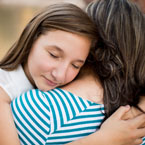 Before COVID-19, life gave us plenty to worry and stress about. But the pandemic has taken things to a whole new level. It has ruined our plans and changed the way we learn, work and socialize. It has separated us from loved ones. Many of us have lost employment. And on top of the pandemic, racial injustice has triggered widespread turmoil. Everything feels out of control.
Before COVID-19, life gave us plenty to worry and stress about. But the pandemic has taken things to a whole new level. It has ruined our plans and changed the way we learn, work and socialize. It has separated us from loved ones. Many of us have lost employment. And on top of the pandemic, racial injustice has triggered widespread turmoil. Everything feels out of control.
But there is a silver lining. These uncertain times give us an opportunity to strengthen our relationships with our children. We can also help them learn to manage their stress and build their resilience, so they can bounce back from life’s tough times – now and in the future.
How can we help our kids? By doing what parents do best. We can ensure that they feel safe, secure and nurtured. This means plenty of conversation, snuggling and playing together. It also means shielding them from news that focuses on death-toll updates and violent events.
Since kids thrive on routine, now is the time to practice healthy habits and comforting rituals like family meals, lots of exercise and outdoor time, limited screen time, regular sleep schedules and household chores. Stay devoted to soothing before-bed routines. And of course, be a role model: let your kids see you making healthy choices for your own wellbeing.
Be an active listener as you encourage your child to express all their emotions. Share your own feelings, too, plus healthy coping strategies. For example: “I miss seeing grandma and grandpa in person. I know this won’t last forever, but I’m feeling a bit sad right now. Shall we write them a letter and make some drawings for them?”
Brainstorm about actions your child can take to feel better. Since helping others is a powerful way to boost moods and shift attitudes, maybe your child could help grocery-shop for an elderly neighbor or collect donations for your local food bank? You might also encourage your child to talk with an older, wiser loved one who has lived through tough times, and who can share their stories and offer reassurance that this too shall pass.
It’s possible that your child may need additional help to cope. If you believe that stress is having a toxic effect on their mental health, seek out some expert support.
Visit the Mental Health Resource Hub or Supporting Mental Wellness and Family Life During COVID-19 to learn more.
It’s Crucial to Stay Vaccinated
 Is your child up to date with their routine vaccinations? Keeping babies and children current has never been more important, yet vaccination rates in Washington state have dropped since the pandemic began. With routine vaccinations being missed or delayed, it’s likely that – in addition to COVID-19 – we will also be faced with outbreaks of serious diseases that can be prevented with vaccines, such as measles and pertussis (whooping cough). The best way to protect children is by vaccinating them on time. Talk with your doctor or healthcare provider today to learn how you can keep your child on schedule and catch up if necessary. Your provider can also explain how they’ve made their clinic safe for visits during the pandemic.
Is your child up to date with their routine vaccinations? Keeping babies and children current has never been more important, yet vaccination rates in Washington state have dropped since the pandemic began. With routine vaccinations being missed or delayed, it’s likely that – in addition to COVID-19 – we will also be faced with outbreaks of serious diseases that can be prevented with vaccines, such as measles and pertussis (whooping cough). The best way to protect children is by vaccinating them on time. Talk with your doctor or healthcare provider today to learn how you can keep your child on schedule and catch up if necessary. Your provider can also explain how they’ve made their clinic safe for visits during the pandemic.
Learn more about immunizations.
Your Child’s Doctor, Urgent Care or Emergency Department?
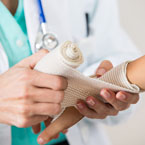 When your child needs medical care, where should you go for treatment? For most issues, see your child’s doctor. Visit them for common illnesses and minor injuries — and when you need vaccinations, checkups, prescription refills or expert advice. They know your child’s medical history and can manage your child’s overall healthcare.
When your child needs medical care, where should you go for treatment? For most issues, see your child’s doctor. Visit them for common illnesses and minor injuries — and when you need vaccinations, checkups, prescription refills or expert advice. They know your child’s medical history and can manage your child’s overall healthcare.
If your doctor’s office is closed and you can’t wait or treatment, urgent-care clinics are open evenings, weekends and holidays. Some take appointments and some don’t. Seattle Children’s has four urgent care locations for children up to age 21, and all accept appointments. They are in Bellevue, Federal Way, Everett and at the hospital campus in Seattle.
What if your child has a very serious illness or injury? If the situation is immediately life-threatening, call 911. Otherwise, take them to an emergency department (ED). EDs are open 24 hours. They have staff and equipment to treat severe asthma attacks, badly broken bones, poisonings, bad burns and other serious or life-threatening conditions.
Visit the emergency or urgent care guide to learn more.
New Online Hub for Mental Health Resources
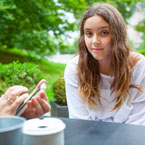 Mental health problems are common in children and teens. In any given year, about 20% of kids experience mental health disorders. However, only about half of these kids get the help they need — sometimes because parents simply aren’t sure what to do. Our new Mental Health Resources page can help parents learn to recognize the signs of a mental health problem and take action.
Mental health problems are common in children and teens. In any given year, about 20% of kids experience mental health disorders. However, only about half of these kids get the help they need — sometimes because parents simply aren’t sure what to do. Our new Mental Health Resources page can help parents learn to recognize the signs of a mental health problem and take action.
Mental health includes how well a child thinks, copes with their feelings and behaves. A mental health disorder can delay or disrupt these basic abilities and interfere with how a child functions at home, at school and in social situations. Just as a child’s physical health changes over time, their mental health can change, too.
Because kids and teens are always growing and changing, it can be tricky to tell the difference between normal changes in mood and behavior versus anxiety, depression and other mental health issues. Sometimes, expert help is needed. Just as you would get your child proper care right away for a broken bone or a physical illness, you can and should do the same for mental health problems.
If you think your child may have a mental health issue, start by talking with their doctor. If your child has a diagnosis and you’re looking for outpatient care, contact Washington’s Mental Health Referral Service.
Get Ready for Sports
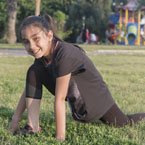 The pandemic has forced many kids to take a long break from being active in their favorite sports, whether they’re on a school team or a community team. Most young athletes will need some time to get back into shape and build up their skills again when sports restart. To avoid injuries, a slow-and-steady plan is best – even for kids who tend to be naturally athletic. Their coach or athletic trainer can recommend a conditioning program that can be done at home, along with stretching routines and skill-building drills. Be sure to help your child match nutrition and hydration as their activity level increases. Also, remember to schedule a sports physical if it’s required.
The pandemic has forced many kids to take a long break from being active in their favorite sports, whether they’re on a school team or a community team. Most young athletes will need some time to get back into shape and build up their skills again when sports restart. To avoid injuries, a slow-and-steady plan is best – even for kids who tend to be naturally athletic. Their coach or athletic trainer can recommend a conditioning program that can be done at home, along with stretching routines and skill-building drills. Be sure to help your child match nutrition and hydration as their activity level increases. Also, remember to schedule a sports physical if it’s required.
Focus on Home Safety
 For children in the U.S. ages 1 to 19, unintentional injuries – including drownings, poisonings and falls – result in more deaths and disabilities than any other cause. With all that’s going on in the world right now, it’s important to stay focused on home safety. Keep your water-safety habits consistent: be sure that young children are supervised around water (even kiddie pools) and that life jackets are worn when needed. Keep poisonous household products out of reach, and store medicines up and away where kids can’t get to them – preferably in a locked container. Prevent window falls by installing window guards and stops. Remember: window screens are designed to keep bugs out, not to keep kids in!
For children in the U.S. ages 1 to 19, unintentional injuries – including drownings, poisonings and falls – result in more deaths and disabilities than any other cause. With all that’s going on in the world right now, it’s important to stay focused on home safety. Keep your water-safety habits consistent: be sure that young children are supervised around water (even kiddie pools) and that life jackets are worn when needed. Keep poisonous household products out of reach, and store medicines up and away where kids can’t get to them – preferably in a locked container. Prevent window falls by installing window guards and stops. Remember: window screens are designed to keep bugs out, not to keep kids in!
Learn more about summer safety.
Sleepwalking and Night Terrors
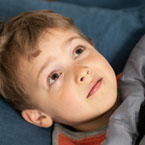 Sleepwalking and night terrors are common in children. They are both types of parasomnias. During parasomnias, a child’s brain is asleep, but their body is awake – so they may have their eyes open and talk in a confused way. A sleepwalker will get out of bed and may say and do strange things. A child who’s having a night terror is apt to appear frightened and cry out or scream. Confusional arousal is a third type of parasomnia, during which a child sits up or thrashes around. Parasomnias are most common from about ages 3 to 10, and they typically occur one to three hours after falling asleep. Visit the link above for more information – including why you shouldn’t wake a child during an event.
Sleepwalking and night terrors are common in children. They are both types of parasomnias. During parasomnias, a child’s brain is asleep, but their body is awake – so they may have their eyes open and talk in a confused way. A sleepwalker will get out of bed and may say and do strange things. A child who’s having a night terror is apt to appear frightened and cry out or scream. Confusional arousal is a third type of parasomnia, during which a child sits up or thrashes around. Parasomnias are most common from about ages 3 to 10, and they typically occur one to three hours after falling asleep. Visit the link above for more information – including why you shouldn’t wake a child during an event.
Quick Tip
The virus that causes COVID-19 spreads from person to person more easily than the flu does. People can spread COVID-19 to others even if they do not feel sick.